People Reminded me $130 Running Shoes Aren't Affordable. My Bad!
I might be out of touch, but it's genuinely hard to dupe performance running shoes. Here's why, plus how to find good deals from reputable brands.
I cannot believe I’m writing about shoes when it’s not a paid assignment, but here we go.
Last week I said a pair of $130 Merrell shoes were affordable. Bad phrasing, not accurate, oops. But unfortunately for all of us in this blockbuster of an American economy, $130 for a pair of name-brand trail runners is actually on the lower end of pricing.
I’m not defending the astronomical cost of outdoor gear, but here are the top trail shoe from each brand, in descending popularity order:
Altra Lone Peak 9: $140
Hoka Speedgoat 6: $155
Topo Athletic Ultraventure: $155
Salomon Speedcross 6: $145
On Cloudsurfer Trail: $160
A sample of the trail-runners I’m testing this season also range in price.
Salomon S/Lab Pulsar 4: $220
Hoka Stinson 7: $170
Saucony Xodus 4: $170
Altra Lone Peak 9+: $155
Merrell Antora 4: $130
At the bottom of the list is the “bargain” shoe in question, the Merrell Antora 4. The mean cost of my tested shoes is $179, and the mean top shoe from each brand is $151. So the Merrells are at least $20 cheaper than the top shoes from reputable brands.
It sucks that $130 is on the low end for a good shoe brand, and I realize that “affordable” is relative. I do try to recommend (actually) affordable dupes as often as possible, but that’s hard with performance footwear. I’ve tried the $50 Hoka dupes, and could immediately tell the difference in fit, comfort, support, and construction. I’m sure they’re fine for casual walking, but I wouldn’t run any real distance in them.
While apparel has a wide range of costs and materials, shoes have a much narrower scope. Most performance running shoes have a similar construction and sourcing cost: take away the carbon-plated outliers, and you’re looking at a $40 price range for the vast majority of shoes. Now look at hiking rain jackets. Name-brand MSRP ranges from $80 to $500. Granted you’re getting a PU laminate compared to a three-layer GTX jacket, but you get the picture. There’s more opportunity for build and cost variability in apparel than footwear.
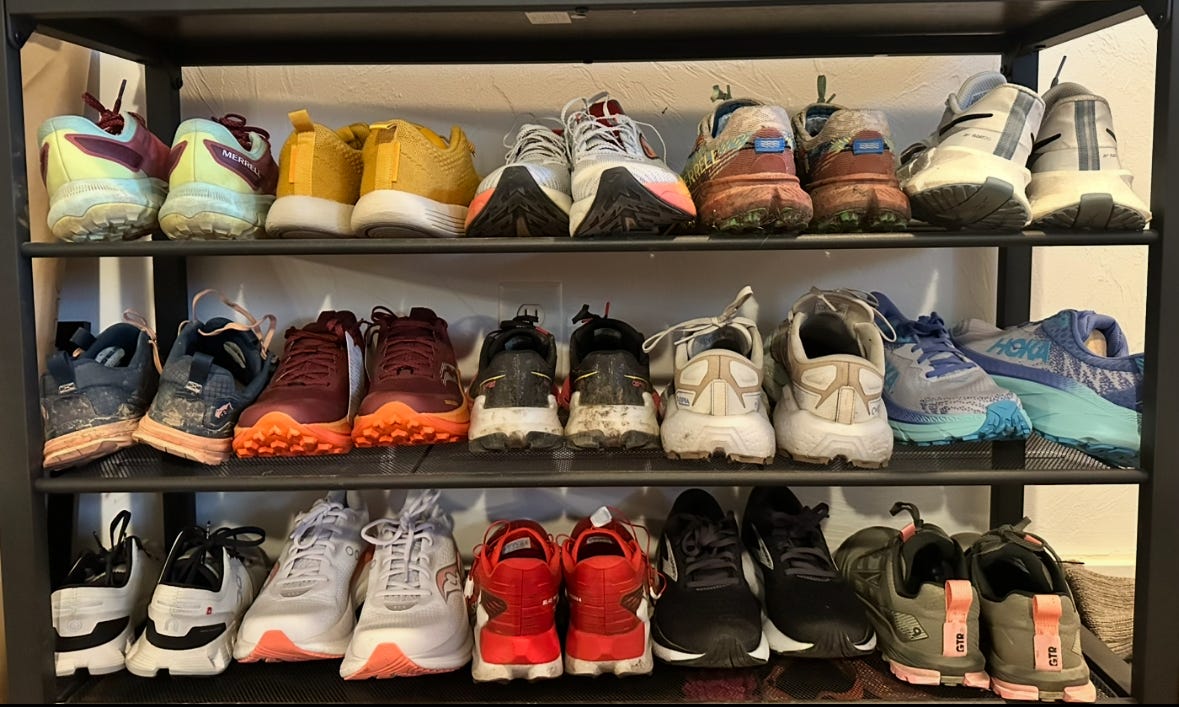
You can also get plenty of excellent running clothes, hiking clothes, and performance layers from discount stores like TJ Maxx and Marshalls. I am just as comfortable running in my $70 compression shorts as I am in these shorts I found as a $20 three-pack at TJ Maxx. Same goes for tights, tank tops, wind breakers, accessories, synthetic midlayers, and even this $70 Decathlon insulated jacket that works just as well as my $400 name-brand layer.
But you can’t really do this with shoes. The construction and support variations and complexity of the builds haven’t been successfully duped yet. Even the most “budget-friendly” road shoe my other Switchback running guy recommends is now $120.
Performance footwear is complicated, and running shoes include structure for lateral and medial stability, layers of midsole foam specific to stride patterns, and foot-mapped overlays for supportive wraps that still allow breathability and flexion. The right shoes can reduce the effect of a high-impact sport, ease strain on your hips and knees, help keep your ankles stabilized, and reduce the chance of overuse injuries and pain.
Remember the shoes have to fit well and be optimized for your intended use, and personal preference in heel-toe drop as well as underfoot cushion is important as well. Also I’m not a podiatrist, so take your actual orthopedic questions to someone who knows more than me.
All this to say: while you might notice your $20 shorts pill more than a $70 pair, or your $10 tank top isn’t as odor resistant as the $60 one, these aesthetic issues don’t have the same potentially detrimental effect of a poorly built, knockoff shoe. When outlets ask me to recommend budget shoes, I always give a big caveat that they won’t be the 1/2-price shoe models they want.
So how do you find affordable shoes that won’t ruin your feet?
*Last* *Season’s* *Models*
Take it from someone who has to constantly update running shoe guides: these brands turn their shoe models around at breakneck speed. I was just editing a review of the Hoka Clifton 9, and when I went to grab the retailer link, I saw the Clifton 10 had just been released. Oh my god.
Top brands like Hoka, Altra, Nike, Brooks, Saucony, and Merrell have models on their 10th, 11th, and 19th iteration. With few exceptions, these shoes change little season to season. Maybe a colorway update, maybe some different overlays. For Hoka, confoundingly adding more stack height. When the new model releases, retailers and the manufacturer still have a wide size range available in the now-outdated shoe, and they go on steep discount. The Hoka Clifton 9 is now $116, which is relatively ok considering the 10 is $150. And if you look at places like Sierra Trading Post, you can find models even further back in the lineup for a crazy discount.
My suggestion is to find a shoe you like, check the current model number, then search one or two models back. You might not get your first choice of colorway and you might miss some new eyelet placement, but to save $30-60 for a shoe you like? Maybe worth it, I don’t know.
There’s no real strategy for timing these new releases. These brands (annoyingly, sorry) release new models all throughout the year, though spring is a good time to check. Saucony just dropped their updated Xodus and Triumph, while Altra dropped their updated Lone Peak a few months ago. It varies, just keep tabs on the manufacturer page.
Another option is to buy used shoes—just shop smart. A compressed midsole can be hard on your knees, and is harder to spot on the shelves than worn-out tread. Brands also last varying amounts of time. Altra’s midsoles give out after 200 miles, while Brooks have comfortably lasted me 500 miles. The condition of the upper (visible abrasions, seam failures, holes in the mesh) can often indicate a compressed midsole. And if you see significant wear on one side of the upper or outsole, it can mean the former owner was an over-pronator or had excessive supination. This can negatively impact your own stride, so avoid those.
Thanks for reminding me that $130 shoes aren’t affordable. I should have said “These shoes are $130, which is $20ish cheaper than the average trail runner.” Merrell is a reputable brand with quality footwear, often at a lower price than the competition. But referring to $130 as “affordable” is a reflection on the fact that I haven’t paid for shoes in 10 years, inflation is out of control, and I write a lot of SEO using buzzwords like “affordable” as a superlative.
Ok this only took me an hour to write. Not bad. Hopefully it’s helpful!!!




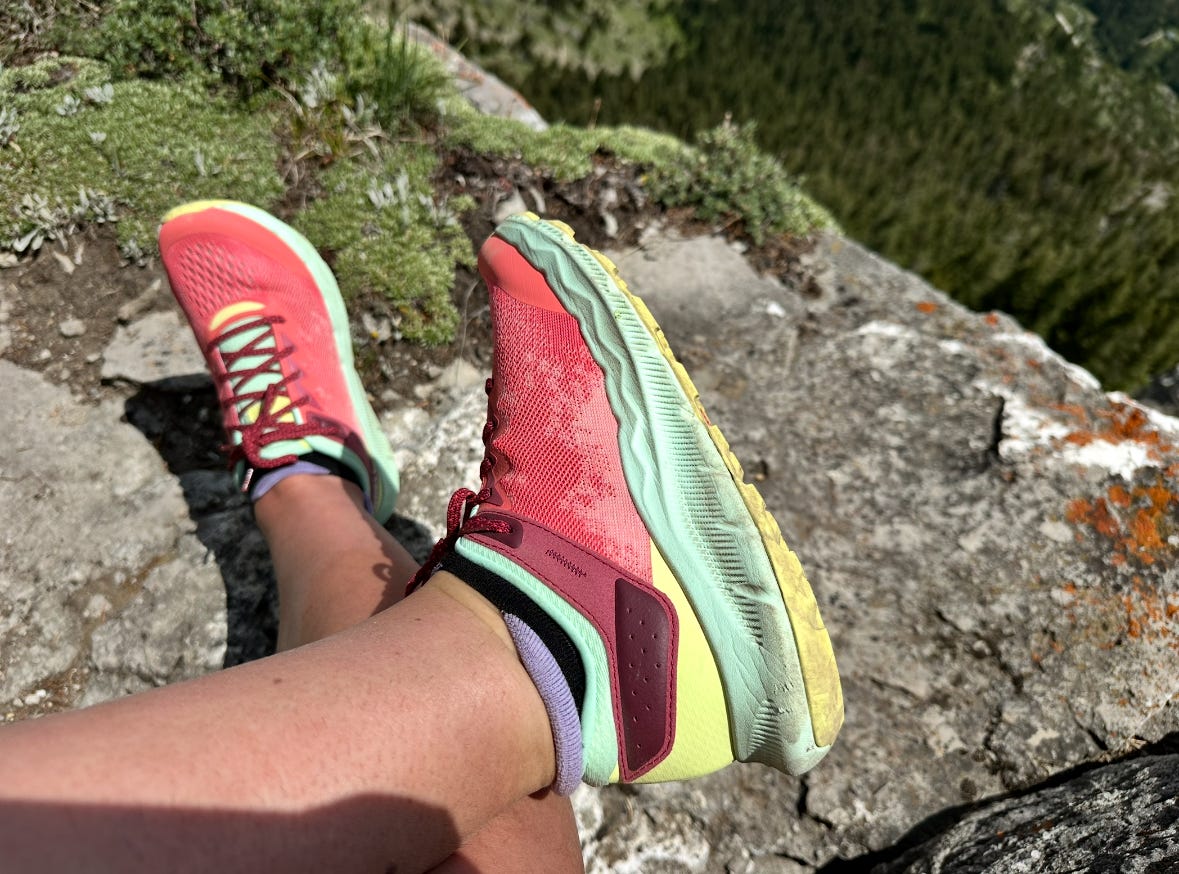
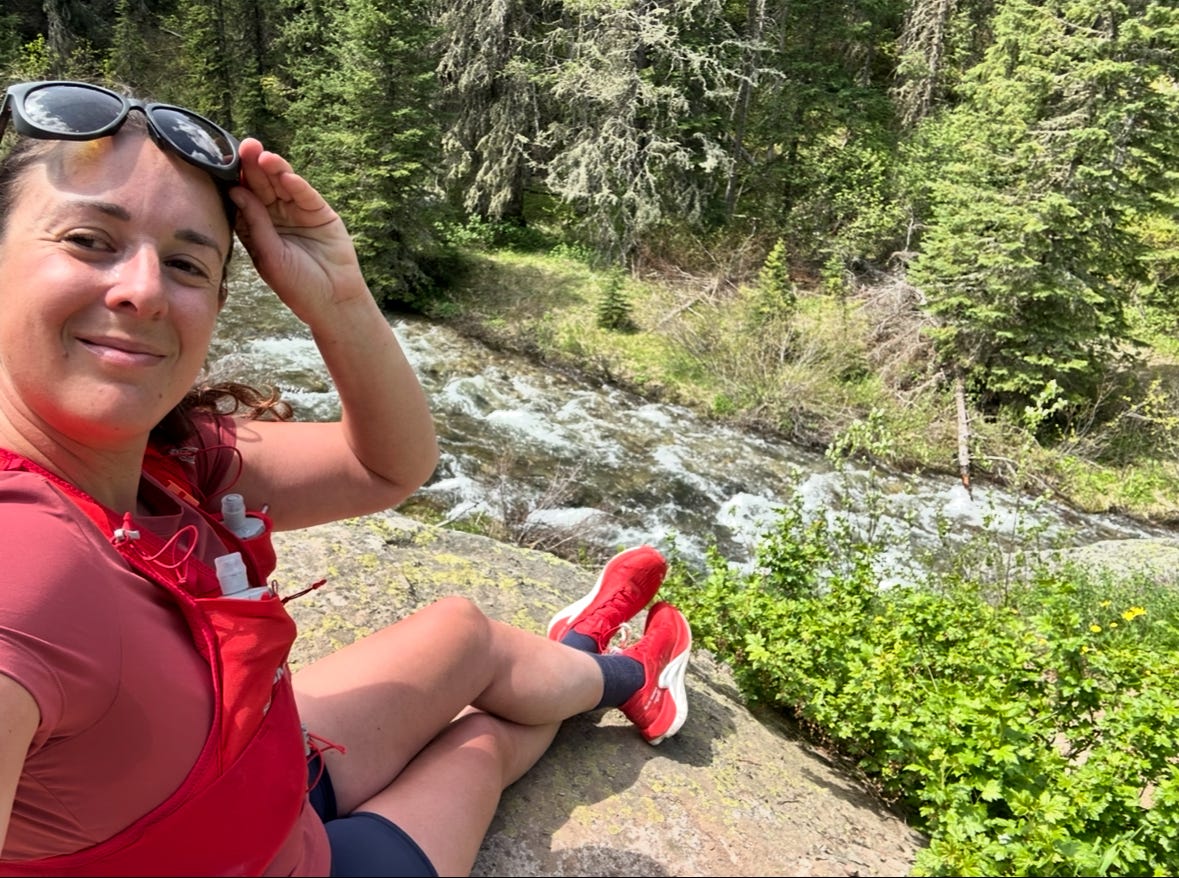
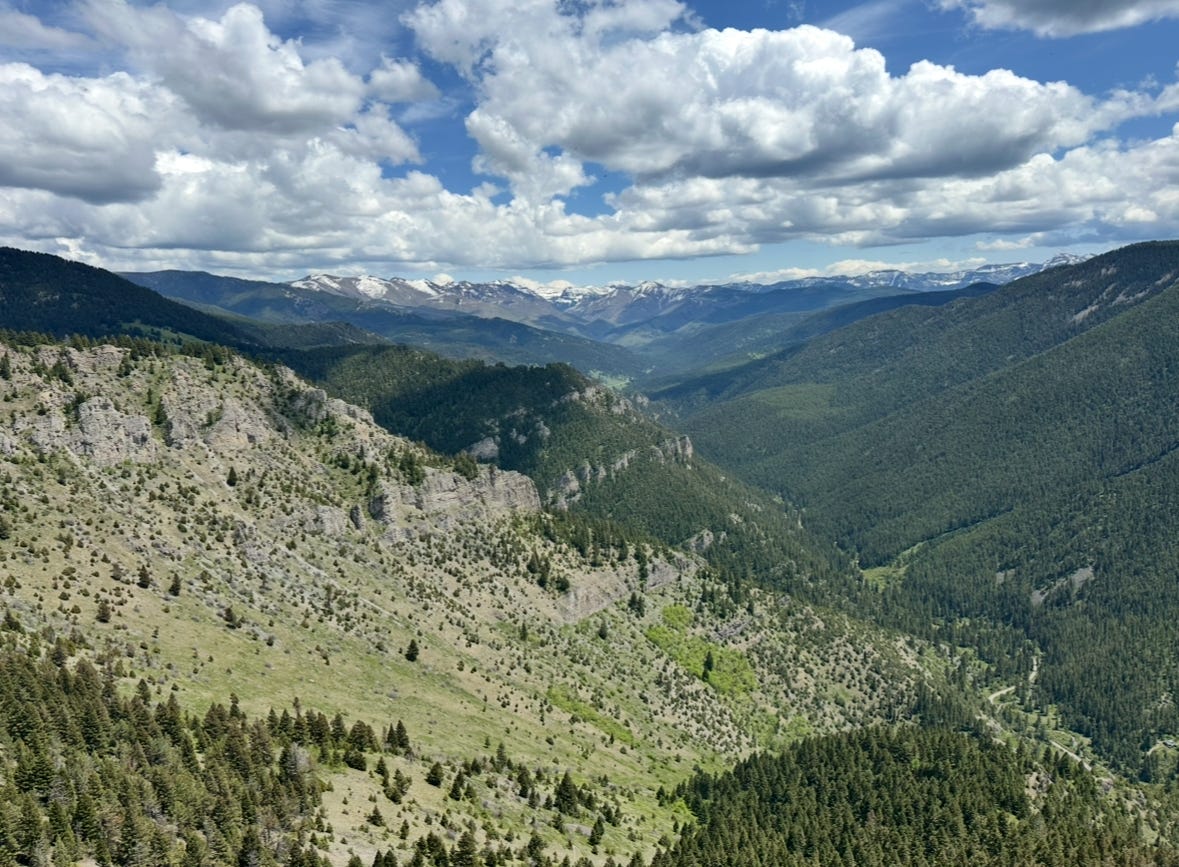
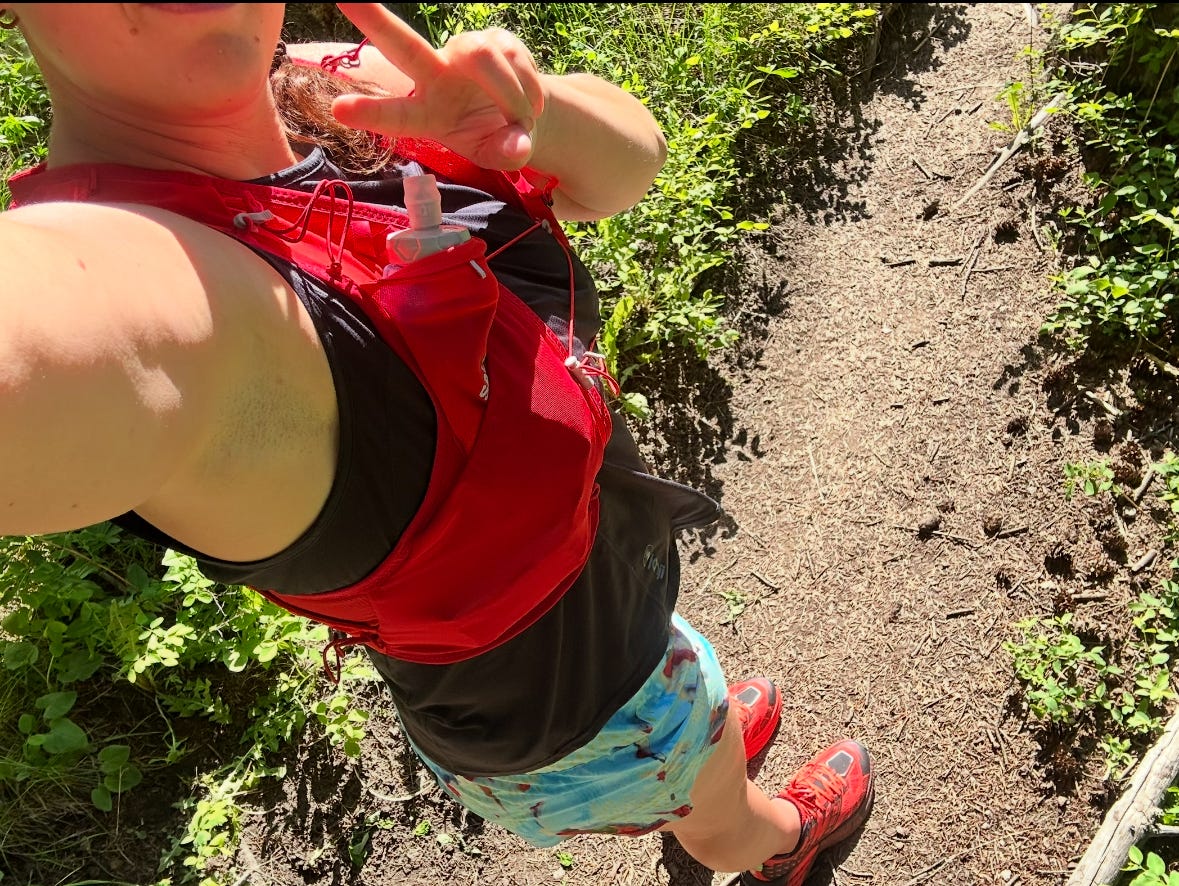
Great post! Please don't feel bad. Affordability is relative. I love my Hoka Mach X and would be thrilled if I found a pair for $130.
I don't think you should feel bad about calling $130 affordable. As you wrote, outdoor gear is notoriously expensive, and $130 is the more affordable option when looking at what's on the market.